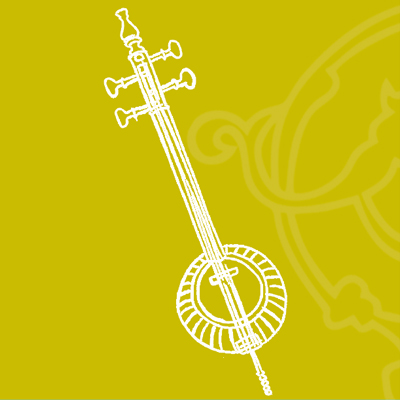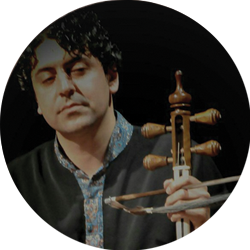Kamancheh is an Iranian bowed string instrument. The body of it has a wooden bowl that an animal skin is drawn on the mouth of the wooden bowl. A bridge is on the skin that is like the bridge of Tar and is fixed on the skin but it is not completely right on strings. The neck of kamancheh has no frets. The head of it is included in the box of ears and on every side of the head is two ears. There is one knob on the top of the head. The length of Kamancheh is totally 80 cm.
In the past, this instrument was without a tailpiece, which is in the present form. In the past, the wires were directly connected to the instrument, as in the Setar or they were connected by a piece of metal. After the violin arrived in Iran, the violin tuning pegs were added to it to allow the player to tune the instrument accurately.
Before the arrival of the violin to Iran, Kamancheh had three silk or catgut strings and did not have the ability to play the high tuning. After the arrival of the violin to Iran, the violin strings replaced with the Kamancheh strings.
Traditional Kamancheh had three strings and after the arrival of the violin, the fourth one added to it base on the violin strings.

Instructor:
- B.A. in Music from Tehran University of Art
- He learned to play Kamancheh under the provision of the maestros, Keihan Kalhor, Ali Akbar Shekarchi, Ahmad Marahemi and Hadi Montazeri.
- He formed “Mahtab” music band with the well-known artist, Wesal Arabzadeh in 2005. It resulted in many performances at domestic and international festivals.
- He also collaborated on several music albums as the regulator or musician, including “Sho Eid”, “Shore Gol”, “Eshgh Va Shabe Sheidai” and “Sargashteh”.
- “Flight on the Bare” is the latest music album that was published by him. It is a collection of dance music of Kamanche and Tonbak in Nova.
- Now, he is the instructor of Shiraz Azad University, Music Art School, and Tehran Conservatory of Music.
 WhatsApp us
WhatsApp us
